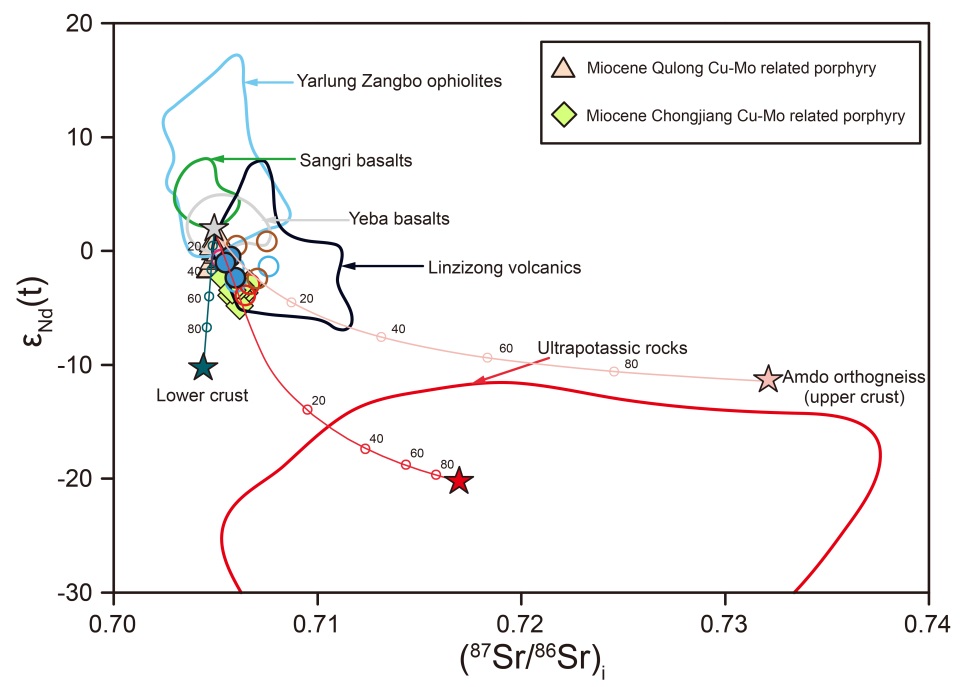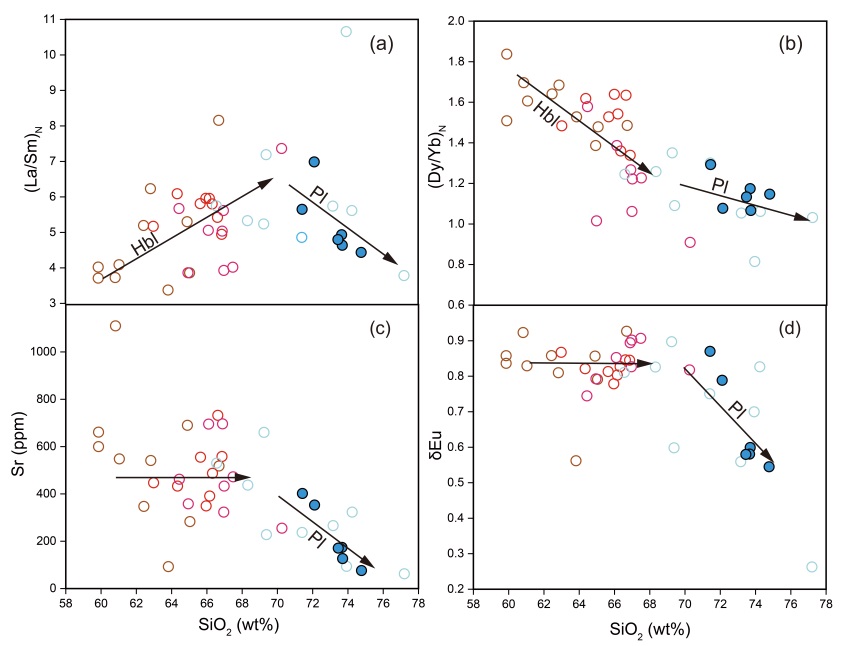The Gangdese porphyry copper deposit belt (GPCDB) along the southern margin of Lhasa Terrane is an important copper ore zone in the Tethyan metallogenic domain. Different from the typical porphyry copper deposits that commonly formed during the subduction of oceanic crust, the deposits of GPCDB were formed in the Miocene after the India-Eurasia collision. The genesis of these porphyry copper deposits is controversial.
Jiama is a giant porphyry-skarn Cu-polymetallic deposit in the GPCDB. Granite porphyry is the main magmatic rocks in the deposit. Therefore, clarifying the origin of granite porphyry is crucial for understanding mineralization.
Combining the geochronology, geochemical and isotopic studies of the granite porphyry in the Jiama deposit, a research team led by Prof. SUN Weidong from the Institute of Oceanology of the Chinese Academy of Sciences provided firm constraint on the petrogenesis of granite porphyry and mineralization potential.
The study was published in Journal of Geochemical Exploration on Apr. 11.
Zircon U-Pb dating indicates that the granite porphyry and other felsic porphyries in the Jiama deposit mainly formed during the 15-16 Ma magmatic pulse events. The formation age of felsic porphyries is consistent with the metallogenic age.
By compiling the previously published and newly obtained Sr-Nd isotope data in this study, researchers find that all the felsic magmatic rocks in the Jiama deposit have a similar and narrow variation range of ISr of 0.707601 - 0.705507 and εNd(t) of 0.80 ~ -2.74, indicating that they have an identical magma source. The zircon Hf-O isotopic compositions suggest their homologous properties as well. All the isotopic data suggest that these felsic porphyries are derived from an identical relatively depleted magma source.
The Sr-Nd isotope two end-member mixing modelling indicates that these porphyries may have originated from melts of juvenile lower crust mixing with a small amount of ultrapotassic magma. Meanwhile, it is worth investigating whether the subducting Nineyeast ridge contributed to regional Miocene mineralization.
The (La/Sm)N-SiO2, (Dy/Yb)N-SiO2 evolution trends indicate that different from other felsic porphyries in the Jiama deposit that the magma of granite porphyry experienced the fractional crystallization of hornblende and plagioclase. The fractional crystallization of plagioclase during magma evolution gradually lowered the Sr contents and erased the adakitic characteristics.
"The high zircon Ce4+/Ce3+ values demonstrate that the granite porphyries in the Jiama deposit have high oxygen fugacity, which is favorable for Cu–Mo mineralization," said WANG Kun, first author of the study.
This study was supported by the Strategic Priority Research Program of the Chinese Academy of Sciences, National Natural Science Foundation of China, Taishan Scholar Program of Shandong, and AoShan Talents Cultivation Program Supported by Qingdao National Laboratory for Marine Science and Technology.

Fig. 1 Sr-Nd isotope compositions of Miocene metallogenic porphyries in the Jiama, Qulong, Chongjiang deposits.

Fig. 2 Evolution trends of trace elements versus SiO2 indicating fractional crystallization of different minerals
WANG Kun
Institute of Oceanology
E-mail: wangkun@qdio.ac.cn
(Editor: ZHANG Yiyi)
|
|

Address: 7 Nanhai Road, Qingdao, Shandong 266071, China
Tel: 86-532-82898902 Fax: 86-532-82898612 E-mail: iocas@qdio.ac.cn


